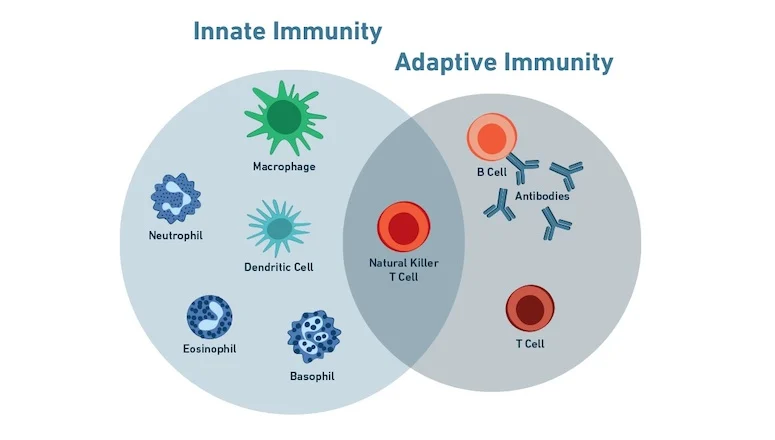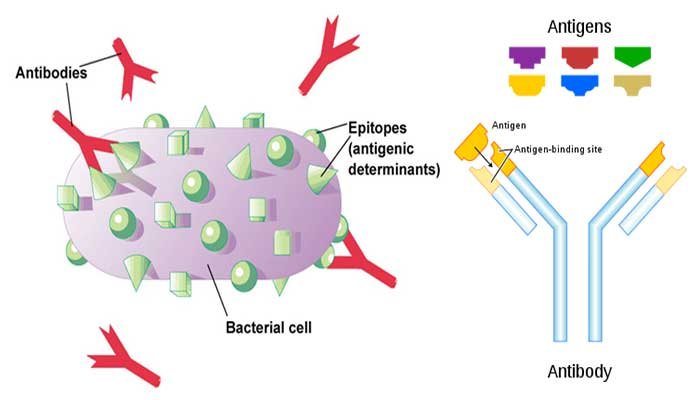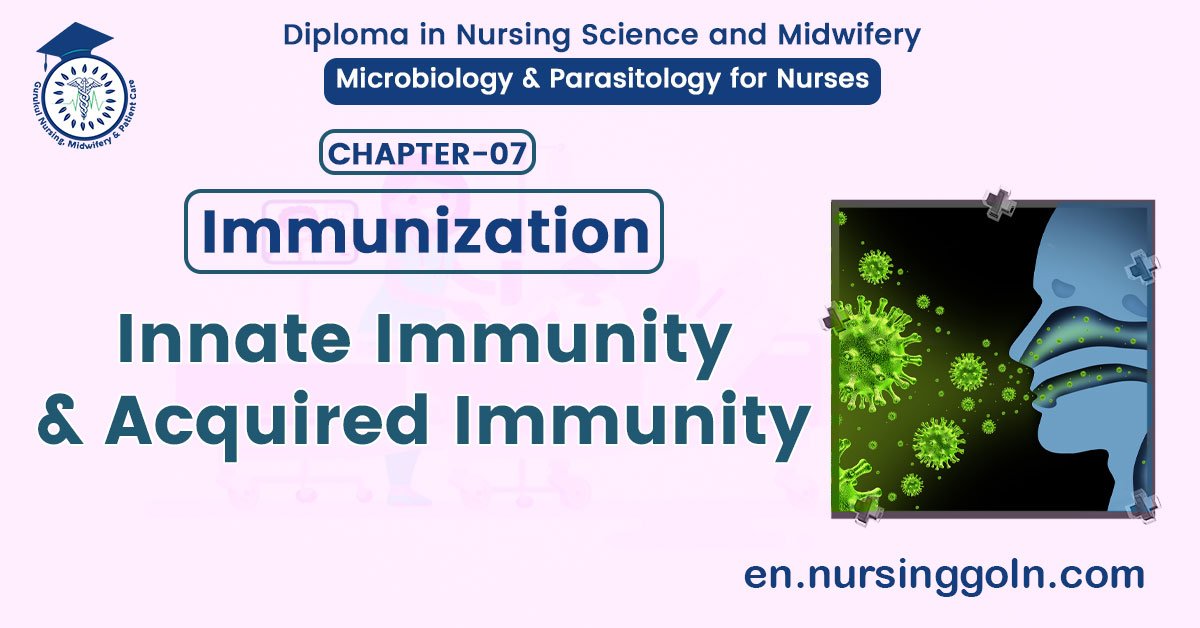Innate Immunity and Acquired Immunity – Basic microbiology, parasitology, and immunology; nature, reproduction, growth, and transmission of common microorganisms and parasites in Bangladesh; prevention including universal precaution and immunization, control, sterilization, and disinfection; and specimen collections and examination. Students will have an understanding of common organisms and parasites caused human diseases and acquire knowledge about the prevention and control of those organisms.
Innate Immunity and Acquired Immunity
Innate (Non-specific) immunity
Innate immunity is the resistance of the body against antigen that exists prior to exposure to the antigen (i.e. it is inborn). It is non-specific.
Acquired (Specific) immunity
Acquired immunity is the resistance of the body against antigen that occurs after exposure to an antigen.
It improves upon repeated exposure, and is specific.

Differences between Innate & Acquired Immunity
| Traits | Innate (Non-Specific) Immunity | Acquired (specific) immunity |
| Time of development | Present form birth | Acquired after birth upon contact with antigens |
| Specificity | Non-specific | Specific |
| Response to subsequent exposure of antigen | Initial and subsequent responses are same | Primary and secondary responses differ qualitatively and quantitatively |
| Immunological memory | No immunological memory | There is always immunological memory |
| Present in | Both vertebrates and invertebrates | Only in vertebrates. |
| Mechanical barrier | Present (e.g.- skin & mucous membrane). | Absent |
| Cells involved | Macrophages, polymorphonuclear leukocytes, natural killer cells | Predominantly T & B- Lymphocytes |
Components/Factors of Innate Immunity
Mechanical/Physical Factors:
Anatomical barriers:
- Keratin layer of intact skin.
- Intact mucous membrane of different organs.
- Bony encasements.
Mechanical removal:
- Mucus and cilia.
- Coughing and sneezing reflexes expel trapped foreign substances.
- Vomiting and diarrhoea
- The physical flushing action of body fluids
Chemical Factors:
Pattern-recognition receptors.
Antigen non-specific antimicrobial chemicals:
- Low pH of stomach and vagina inhibits growth of many microbes
- Fatty acids of skin inhibit growth of micro-organisms.
- Acid pH of sweat and sebaceous secretions ->> inhibitory to microorganisms
- Lysozyme in tears, nasal secretions and saliva ->> degrades peptidoglycan of bacterial cell wall.
- Spermine and zinc in the semen are bactericidal.
- Lactoperoxidase in milk has bactericidal action.
Antigen non-specific antimicrobial cytokines.
Biological Factors (cellular & soluble factors):
The complement system:
- The lectin complement pathway.
- The alternate complement pathway.
Cells involved in body defense:
- Defense cells in the blood (leucocytes).
- Defense cells in the tissue (macrophages, dendritic cells, mast cells etc.).
- Normal flora can compete with pathogenic bacteria for nutrients and also produce antimicrobial substance.
- Phagocytosis.
- Inflammation.
- Nutritional immunity.
- Fever.
- The acute phase response.

Components of Immune System
Two basic components –
Cellular components
- Macrophages: professional phagocytic cell & antigen presenting cells (APCs)
- B-cell (B-lymphocyte)
- T-cell (T-lymphocyte)
- NK cell (natural killer cell)
- Neutrophil
- Mast cell
- Eosinophil
- Basophil
- Platelets
Soluble components
- Immunoglobulin’s (antibodies)
- Complement
- Cytokines
- Inflammatory mediators
Mechanical barriers
- Intactness of the skin and mucous membrane.
- Muco-ciliary apparatus of upper respiratory tract.
- Normal flora of different anatomical sites
Genetic factors
- Individuals with deficiency of glucose 6-phosphate dehydrogenase are resistant to Plasmodium falciparum.
Immunoglobulin’s
Immunoglobulin’s are glycoproteins of structural similarities with or without antibody like activity.
Or
These are proteins of animal origin endowed with or without antibody activity.
Definition of Antigen
An antigen is a substance protein or polysaccharide in nature which when introduced into the body is capable of inducing an immune, response leading to formation of antibodies with which it react specifically.

Definition of Antibody
Antibodies are immunoglobulin that react specifically with the antigen that stimulate their production. -IgG, IgM, IgD, IgA, IgE.
Functions of immunoglobulin’s:
| IgG |
|
| IgM |
|
| IgA |
|
| IgD |
|
| IgE |
|
Read More….
